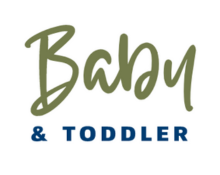
A milk bleb, also known as a milk blister or nipple blister, is a small, white or yellowish spot that can appear on the nipple or areola during breastfeeding. It occurs when a small amount of skin or milk duct tissue overgrows and blocks a milk pore. Here are some important points about milk blebs:
Appearance: Milk blebs typically appear as a small, raised blister or spot on the nipple or areola. They can be white, clear, or yellowish in color and may be painful or tender to the touch.
Causes: Milk blebs can occur for various reasons, including:
- Poor latch or ineffective milk removal, which can lead to milk stasis and the formation of a bleb.
- Pressure on the nipple, such as from tight clothing or an improperly fitting bra.
- Engorgement or blocked milk ducts, which can contribute to the development of milk blebs.
Symptoms: Milk blebs can cause discomfort or pain, especially during breastfeeding or pumping. You may also notice a small white dot or blister-like spot on the nipple, often over a milk duct opening.
Treatment and management:
- Warm compresses: Applying a warm compress or soaking the affected breast in warm water can help soften the skin and promote healing. This can be done before breastfeeding or pumping to help open the blocked milk pore.
- Gentle exfoliation: After applying a warm compress, you can gently exfoliate the area with a clean washcloth or a soft toothbrush. This can help remove the layer of skin covering the bleb and facilitate milk flow.
- Nursing or pumping techniques: Experimenting with different breastfeeding positions or using a breast pump on a lower suction setting can sometimes help clear the milk bleb.
- Seeking professional help: If the milk bleb persists or causes significant pain, it is advisable to consult with a healthcare professional or a lactation consultant. They can assess the situation, provide additional guidance, and ensure that there are no underlying issues contributing to the milk bleb.
It’s important to note that if you’re experiencing severe pain, fever, or signs of infection, it’s crucial to seek medical attention promptly, as these symptoms may indicate a more serious condition such as mastitis.
Remember, milk blebs are typically temporary and can be managed with appropriate care. With proper treatment and attention to improving breastfeeding techniques, most milk blebs resolve within a few days or weeks.
